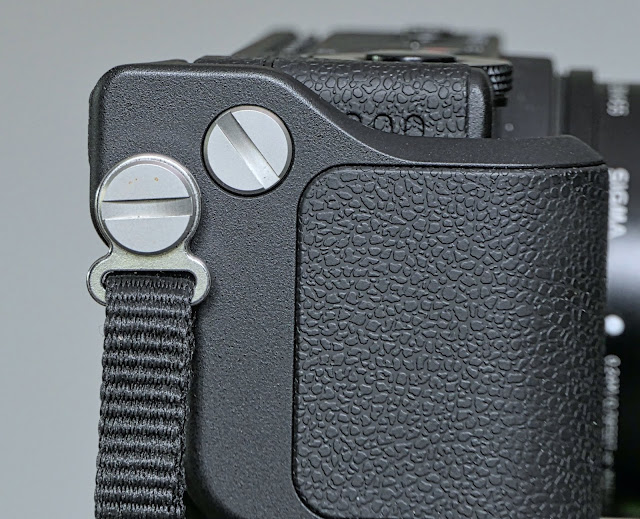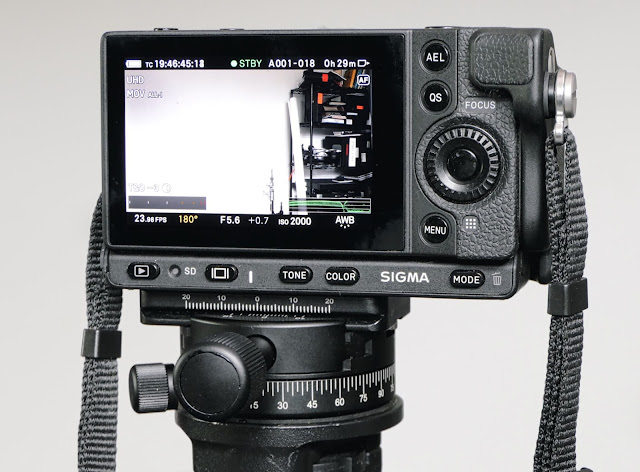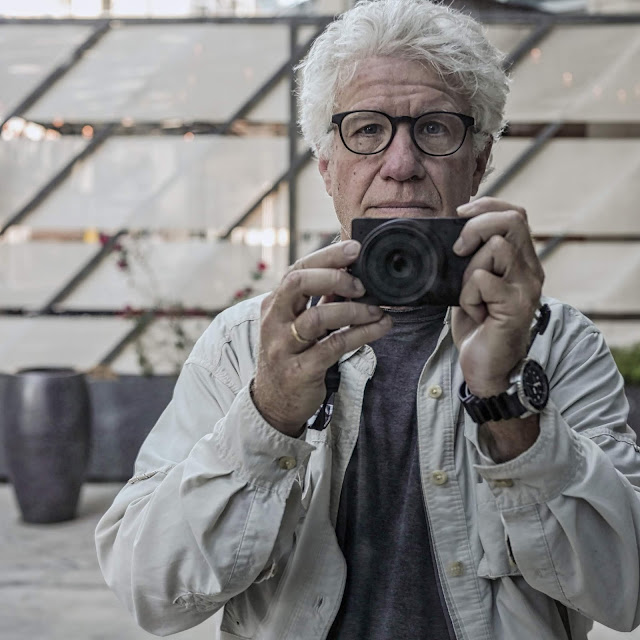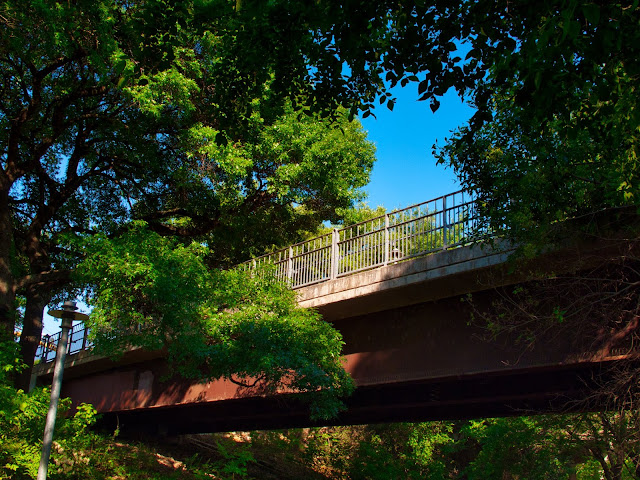What is the Sigma fp?
The Sigma fp is a small camera that looks like it was designed by an industrial engineering firm rather than a camera company (see plentiful images below). The design disregards most camera body traditions and moves away from the rounded corners and vestigial finder humps that grace a huge range of DSLR and mirrorless cameras. It's designed as a boxy little cog that's not really meant to be anything more than the centralized attachment point for lenses and accessories. No one agonized over the feel of the body beyond rounding the corners and edges so they don't poke into an operator's hand. It's the most minimalist expression of camera-ness on the market that I can think of. And, in terms of operation it's equally rudimentary. No custom function buttons anywhere. Hallelujah.
Essentially your $1,800 USD buys you a very well fabricated "brain" of a camera and then invites you to outfit it to suit your purposes. The body feels very well made and all the controls are built from good, solid materials and are...adequate. There are only three reasons I can think of to own and use a Sigma fp. One is the very good sensor with its commensurate, wonderful color science. Sigma have delivered a sensor and processing package that makes beautiful raw and Jpeg files. The sensor is a full frame (24 by 36mm) device that is among the current state of the art 24 megapixel sensors in any camera brand. I have no idea whether it's Sony chip under the filter or a TowerJazz but whatever it is it's sharp and relatively noise free; I'd go out on a limb and say that the files it produces are currently my favorite of all the cameras I've tried. If all you care about it really great color, and you can do without fast and flexible autofocus, don't need in-body image stabilization, can adapt to using the rear screen for exposure evaluation and composing, and love small packages, then this might be the right camera for you.
If you need great continuous auto focus, high frame rates with great AF, and an excellent eye level finder then this is profoundly NOT the camera for you. I can't imagine handholding with camera with a 70-200mm f2.8 on the front. Not for more than five or ten minutes at a time...
And, while I'm mentioning weak points of the camera for general photographers, I have to say that this is definitely not the camera for you if you often shoot with flash in the studio or EVER shoot with flash outdoors. This is because the camera uses an electronic shutter with a very, very slow maximum sync speed. Think about the fact that while using this camera with flash you'll be syncing at 1/30th of a second, or slower. If you want to shoot flash while using the .DNG raw setting at 14 bits you'll be looking at a sync speed of 1/15th of second. Pretty limiting for nearly every flash scenario of which I can think. You certainly would NOT want to use this camera, along with a flash, for events or weddings!
While we're on the subject of the electronic shutter you should also be aware that, like most other electronic shutters, you'll definitely see banding if you shoot under fluorescent lights or most non-professional LED light sources. The banding will get progressively worse the higher you set your shutter speed. So, not a great camera for catching available light shots in a corporate cube farm or a call center.
If you are still reading and haven't thrown your hands up in the air and yelled "deal killer" at least once then I have one more negative thing to add to the mix: the battery life is mediocre when shooting photographs. Mediocre as in....maybe 250 shots if you've implemented the battery saving settings offered and don't "chimp" too much.
So, who in their right mind would consider this camera? I conjecture that it's made for very advanced users who already use a different and more fully featured system in their day-to-day work. I'll get to why I think it's a useful addition for someone who is already shooting in the L-mount system but I'll preface all the rest of the review by saying that this is not even really a photography camera but a very targeted video camera that, in a nice but limited envelope of capabilities, can also provide stunning photos. But you have to use it in appropriate settings. Only in continuous light and only with small and manageable lenses. But for video it's a whole different equation.
Summing up what the fp is: it's a small brick with very few features and very limited photographic capabilities but blessed with a sensor that can deliver beautiful files over and over again --- if the use case is just right. No eye level finder, no super fast focusing, no in-body (mechanical) image stabilization. No real flash capabilities. And a body you won't want to hand hold with long lenses for very long because of its "primitive" haptics and small size.
Who is the Sigma fp really for?
I'm pretty sure Sigma designed and outfitted the fp to be the leading edge in the L-mount system for high end video. Really high end video. That's where the camera shines. But you have to understand what kind of video production this camera is really aimed at.
Video production has two forks. On one hand you have what we used to call electronic news gathering or ENG cameras. These cameras are meant to be used in the field by TV camera men and documentary film makers who need a solution that can handle lots of scenarios quickly and easily. The average news gathering camera used today is basically a very nice camcorder with a fixed lens that offers a fairly fast maximum aperture and a nice zoom range. It uses a smaller sensor so it's easier to keep everything a cameraman needs to keep in focus in focus. (That also helps when it comes to making fast, long range zoom lenses). These cameras have every bell and whistle you might need to get the shot including professional microphone inputs (XLR) and built-in neutral density filters to handle outdoor lighting scenarios. Most of the current cameras used for this type of work offer autofocusing and good image stabilization.
But those kinds of all in one, ENG video cameras not made for what is generally called narrative film making. This is a totally different animal with a different set of artists' preferences. High end digital video cameras for film making (TV shows and movies) are almost never equipped with smaller sensors, in fact, over the last few years film makers have moved from using super 35 (basically APS-C) formats to full frame and even larger formats. When these cameras are used for making movies and commercials the directors of photography are selecting very specific lenses for their projects with a current preference for extremely well corrected, very fast aperture prime lenses, although there are a number of cinema zoom lenses that are also superb. The average prime lens for the interchangeable movie cameras is generally two or three times the price of an entire ENG camera set up and can frequently cost more than a nice car.
What these film makers want from their cameras is a beautiful, full frame (or larger) image that doesn't use a consumer, low data rate, compressed video codec. Red Digital Cinema created a stir in the movie production community a little over ten years ago by introducing cameras that output huge raw video files. Just as in still photography the raw files offer a much broader range of color correction capability as well as the possibility of rescuing either over or under exposed files. The cameras also shoot at very high bit depths like 14 and 16 bit which means they don't suffer from banding in skies or weird artifacts in shadows to mid-range transition tones. But the very few cinema cameras that shoot raw mostly come just like the little Sigma fp; they are little more than a box full of processors and an imaging sensor to which any number of accessories can be attached.
The downside of raw cinema files is that they require very fast processors and very fast memory to recorder and process the data gushing off the sensor. While a typical ENG camera writes to an SD card and delivers .MP4 or .Mov files that are between 50 and 100 megabits per second of data, the cameras that can do cinema raw deliver files that can be as big as 2700 megabits per second; some even more. The end result is files with amazing color detail and amazing color discrimination. The video from raw files also offers pretty tremendous dynamic range too. The cameras are essentially writing 4 or 5k raw files in the DNG format 24 times a second, or more. Each frame is a fully encapsulated, stand alone raw file.
A current, middle of the road, Red Digital Cinema camera (with no lens, no finder and no battery or memory) runs about $25,000 and up. The top of the line Red Digital Cinema camera is currently around $80,000. It's fan cooled and weighs a ton. There are other brands, like Arriflex, that offer similar solutions at even higher prices.
I write all of this by way of trying to clarify the value proposition of the Sigma fp. It's one of the very few cameras under five or ten thousand dollars that offers a cinema .DNG raw file and which can be highly configured for cinematic/narrative projects. With fast Leica L-mount lenses on the front, an outboard digital monitor for composition and exposure evaluation, and an attached, fast SSD drive attached to the USB 3.1 port the Sigma fp can rock cinematic, raw video at 12 bits @23.98 or 29.97 fps, outputting data at up to 2500 megabits per second. And it can do all of this without overheating.
The weak point of the camera for video production is audio. The input is a standard 3.5mm jack and the controls for gain are pretty rudimentary but certainly adequate for "scratch" audio. Most high end production crews are recording audio to digital audio recorders like the ones from Sound Devices which offer great limiters and a lot more control and redundancy than the ones you will find in just about any standalone camera. But in narrative work and movies you have specialists on the crew to handle each shooting and recording parameter. They would use the scratch files to sync the externally recorded audio to the video clips.
So, if you look at the fp from that perspective then it starts to make a lot of sense to production companies that require the right "brain" or bare camera, but will plan on supporting the camera with all the peripherals that they already use. At $1800 per camera the fp costs about what a professional compendium lens shade for a cinema lens retails for. The need for small, inexpensive but gloriously file capable cameras like this on motion picture sets is endless. While you might still use a very expensive Red or Arri camera as the primary camera you could use multiples of Sigma fp's shooting raw as b-cameras to capture different angles simultaneous with the primary camera. But there's no reason you could not use the Sigma fp as a primary camera either. Most narrative project crews won't be flustered at its lack of scene modes or face detect AF as they prefer to manually focus their cameras and lenses, want to shoot raw, and are used to working with SSDs as camera storage.
But why would I buy one?
I'll admit that I get a lot more use out of a more generic camera like a Lumix S1 but there are things about the Sigma fp that intrigue me. And I've come to realize that many of my camera preferences are eccentric (to say the least).
First of all the size, for a full frame camera, is wonderful. When you couple the fp with a Sigma 45mm lens it's a great package to walk around solo and shoot with. It's fairly light (though dense) and I've yet to hit an exterior situation in which the camera and lens together didn't excel.
If you are looking for ultimate image quality in a scene and you can use a tripod and long exposures you can put the camera in the raw DNG still mode and set ISOs as low as 6. Yes. 6. At all the ISOs below 100 the camera takes multiple frames and builds the file by a form of file stacking. This was a feature in the Kodak SRL/n that I loved but it wasn't as nicely implemented as it is in the Sigma. When you shoot this way the camera is assessing the noise in each frame (and electronic noise is essentially random) and comparing with with the other files generated in the stack which allow the processor to separate the noise from real data and kick the noise out of the resulting, final file.
While Panasonic, Olympus and other's use multiple framing with movement between shots to create files with more resolution Sigma is opting to use multiple frames with no movement between shots to create noiseless very color accurate files. A trade off I personally like. Of course, this feature is not usable with flash.
It's these wonderfully eccentric additions that make the camera so interesting to me.
I also notice (from cases where the camera has obviously failed) that the digital image stabilization is also a combination of separate frames which are analyzed and combined for correction. If I'm moving too much I can see overlaps in some parts of the files which the camera is unable to correct. That's okay because the camera does interface perfectly with the Pro lenses from Panasonic's L-mount inventory, and both the 24-105mm f4.0 and the 70-200mm f4.0 offer really good, optical image stabilization.
The fp also provides me with a different color and tonal look than my other cameras and I like being able to select those "looks" when I want them. A lot of the presets, like "teal and orange" or "cinema" are too strong or over the top but each color profile can be blended back with a control slider in the menu that will mostly get me into the ballpark I want to be in.
The biggest argument for my owning the fp is that it's control interface and operational controls are all very minimalist and very logical. It took me all of two days to master the camera and compared to other cameras that's a highly compressed time frame. There were still one to two operational things that threw me but I've figured them out and now the camera seems wholly transparent to me, which I love.
I've tried the raw video files (with the help of video guru, Frank) but to really use them to their best potential I'd have to be much better colorist/color grader than I am. Abject laziness had me ending up shooting some of the lower data rate files in video (1080 10 bit All-I @ 200 Mbs) and converting them in DaVinci Resolve to a more workable file format. But when that huge art project comes rolling around and needs to be shot in the ultimate codec at least I'll be ready.
I will also say that I like a number of the lower data rate files in the .Mov space. They're fine for most of my current projects but for on camera interviews I would use this camera as a "B" camera since the Lumix S1 with the V-Log update is a more complete solution for that kind of video.
To end my review I would say that most people who are interested only in photography will (and probably should) reject the Sigma fp out of hand. For around the same outlay of cash there are cameras that offer a much more complete feature and capability set. And for someone who shoots photos with a Lumix S1 or S1R it makes more sense to shoot day-to-day video projects with one of those cameras. For everything but raw files they'll yield the same quality (but with a different overall look) as the Sigma fp.
It's a camera that requires you to have some nostalgia (as a photographer) for a time when camera controls were simple and straight forward and didn't require massive "customization." Unless you shoot only art for yourself you'll want to have a back-up system for professional work or for those times when someone begs you to shoot graduation photographs of a kid from kindergarten in a big, fluorescent lit auditorium.
If you are making a film though, a couple of these and a little basket of great lenses would get you into the same technical arena as the big players. You'll need to know your stuff for fully manual film work, and you'll grimace at the micro HDMI port every time you plug in your monitor, but you'll get great files to work with and your editor will be happy with you.
Or, you can be like me and buy one because it's.....intriguing... and you hope it will be the magic bullet that will make all your work look better (but my rational brain is NOT counting on it in my case). I've already gotten ten or fifteen images from the camera that I really like. I might not have gotten them or even shot them with a different camera --- so there is that. I'd love a second one. And when/if I ever retire it would be fun to see how long I could stand just using this camera and a 45mm lens. Maybe I'll try it.
This is the unadorned camera with the 45mm Sigma lens on it. The whole package is small and light for a full frame camera with a great 24 megapixel sensor. It's extremely likable too. One point I forgot to mention above is that now three of my favorite cameras all take the same Sigma/Panasonic battery. The Sigma fp, the Lumix GX8 and the Lumix fz2500. Nice that they are all interchangeable.
The 45mm is long enough to put backgrounds well out of focus. The white balance is superb.
If you look at the space between the back of the camera and the rear screen you'll see a little grating. The entire back of the camera, under the screen, is a huge heat sink that allows this camera to blaze away at amazingly high data rates without overheating. No overheating means no noise. But the downside is that the sensor needed to be anchored to the heat sync for the best efficiency and that ruled out in body image stabilization.... Also, the camera is weatherproof, splash and dust resistant.
The anchor points for the camera strap are engineered as standard quarter inch screw sockets so you can actually use the socket on each side or the bottom of the camera to attach it to a tripod. This view shows the camera with a small hand grip attached. It works well and the grip provides socket so you can still attached a strap lug. While the grip isn't big and chunky it provides a good hold and has a nice thumb pad to rest your right hand thumb on.
Close up of attachment point for strap. The company makes a number of useful accessories. Allegedly they make a magnifier hood for the rear screen but I've had one on order from B&H Photo since last year and have yet to see one. I think it's a unicorn product that will only come once I've moved on to the next model.....so sad when production lags demand. But, at the moment it's saving me three hundred dollars... so there is a silver lining.
The rear screen is great and easily viewable in every situation except when full sun is striking the screen directly. A magnifier hood would come in handy. Or you can use your hand to shade the screen. But that seems so "old school." Okay Boomers. Use your hands.....
The menus are logical, straightforward and well laid out. In fact, the menus are one of my favorite things about the camera.
When you switch between the "cine" setting and the "still" setting on top of the camera the camera brings up the right menu. Notice just above that it's showing me time code (top left), a waveform meter on the bottom right and along the bottom of the screen it's showing me shutter angle and fps. You can hit the second button on the bottom row to change the display for more or less detail and clutter.
Finally, an easy to operate camera with no infernal nest of custom function buttons to confuse or distract a real photographer. Notice the grill at the bottom which gives a better illustration of the heat sinks. That's about as calm a camera top as I could wish for. Ah....
Two of the compelling reasons for me to own this camera are the really, really good 24 megapixel sensor and the L-mount lens mount. I'm saving up so I can put some outrageous Leica SL lens on this camera. Just because it's possible. Works with all my Sigma Art lenses and my Panasonic S Pro lenses.
This is about as discreet and unobtrusive as I think a full frame camera can be. And, of course, the shutter can be absolutely silent. If you are composing on the rear screen everyone will assume it's just an old point-and-shoot camera and not pay any attention to you at all...
this is the noble 45mm lens hood that broke the fall of a brand new S1 when it tumbled off
a picnic bench and hit the concrete. The tape is covering a shiny spot where the
concrete shaved off some black paint. The lens still works perfectly.
Come to think of it, so does the camera body.
During the current crisis I am becoming my most popular (but not most favorite) model.
I took all of the photos of the Sigma fp with this Lumix fz2500. It's pretty sharp and easy to do close ups with. Getting reacquainted with its video menus this week.
So far we're safe and sound over here and doing all sorts of domestic stuff like painting and sword fighting. I've been walking with the Sigma fp and that inspired me to write about it again. It's a fun camera if you have a particular bent toward odd but simple tools. Keep an extra battery in your pocket. One less thing to worry about.
Added next day: Here's a nice video review that does a really good overview of the Sigma fp's strengths and weaknesses: https://www.l-rumors.com/sigma-fp-photographer-review-by-richard-wong/
Added a day later: Here's a nice review from a photographer in Chennai, India: https://medium.com/@hornbill/an-honest-review-of-sigma-fp-cd4e40579212















































